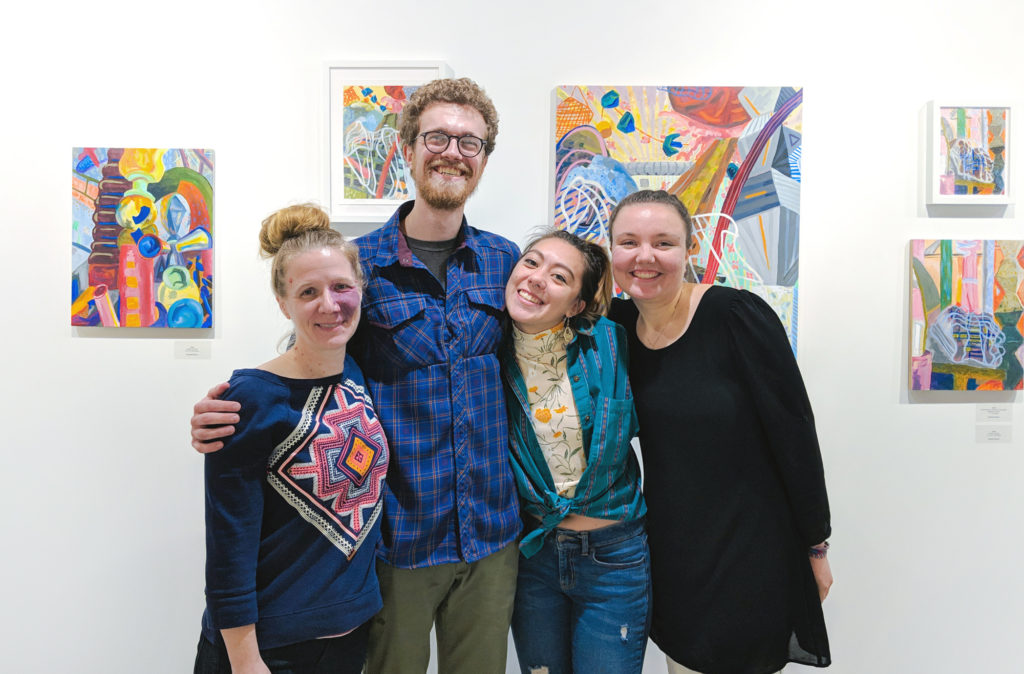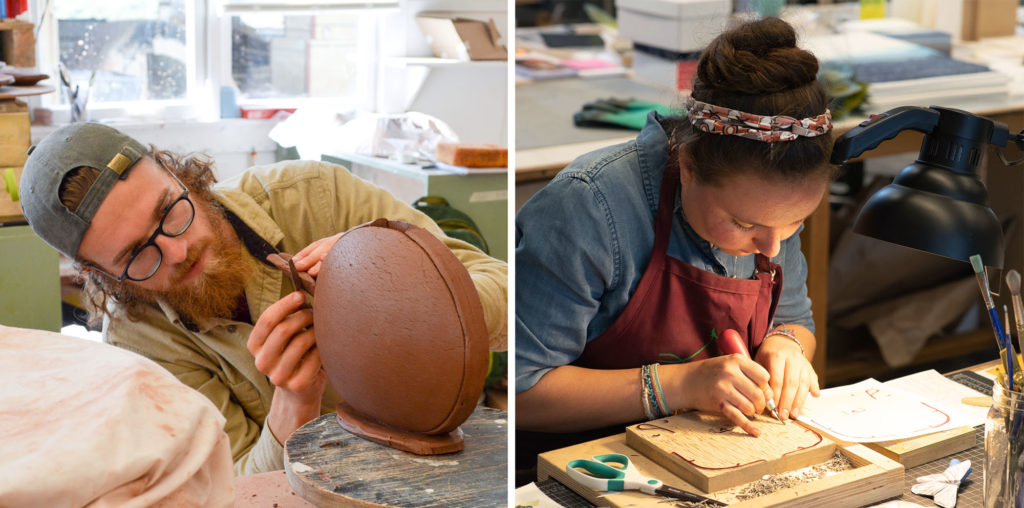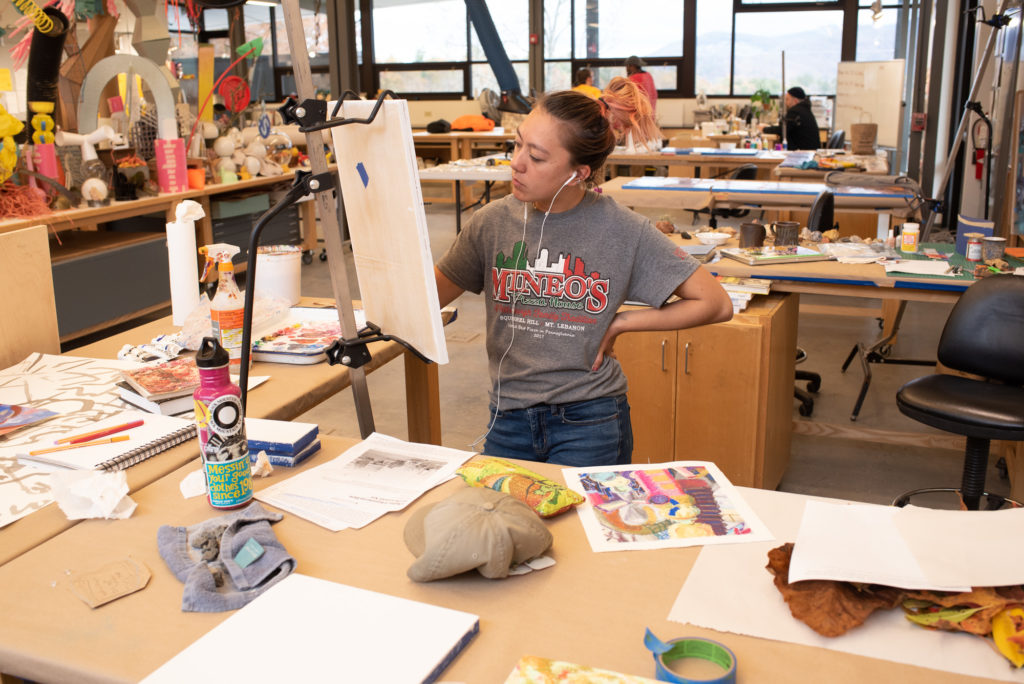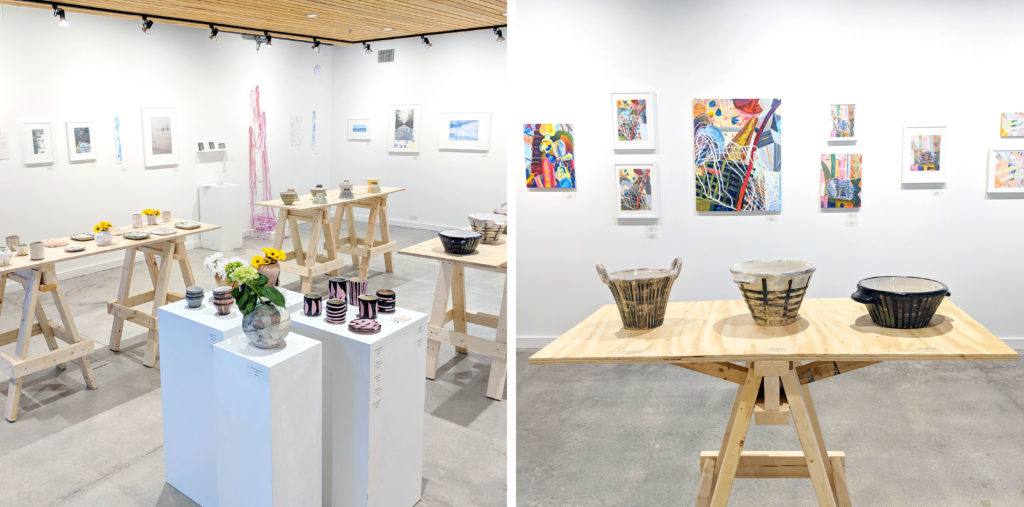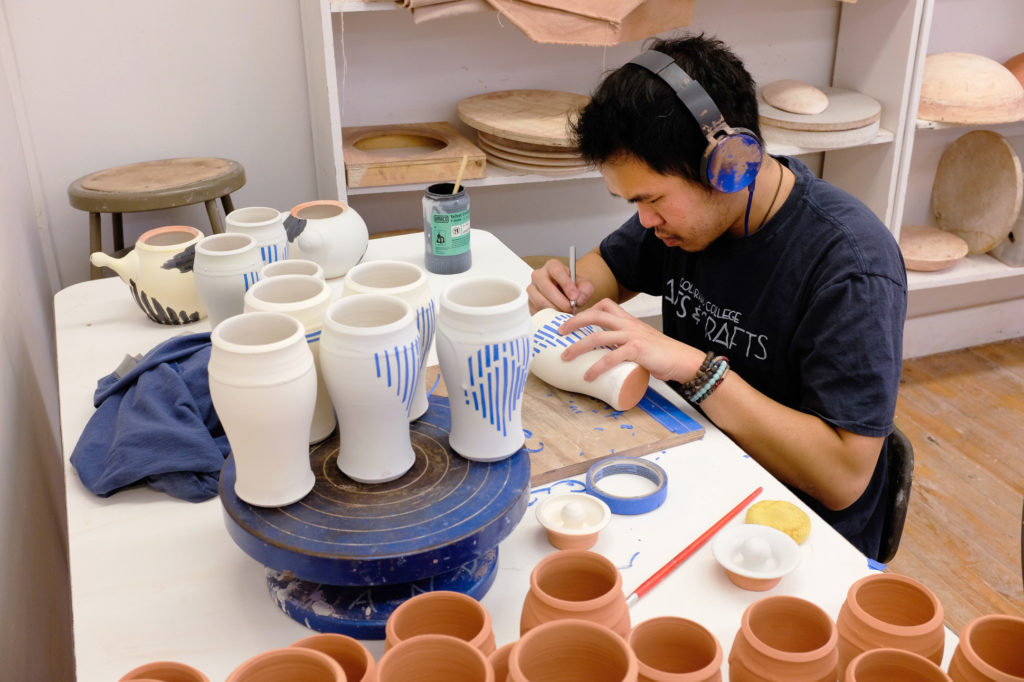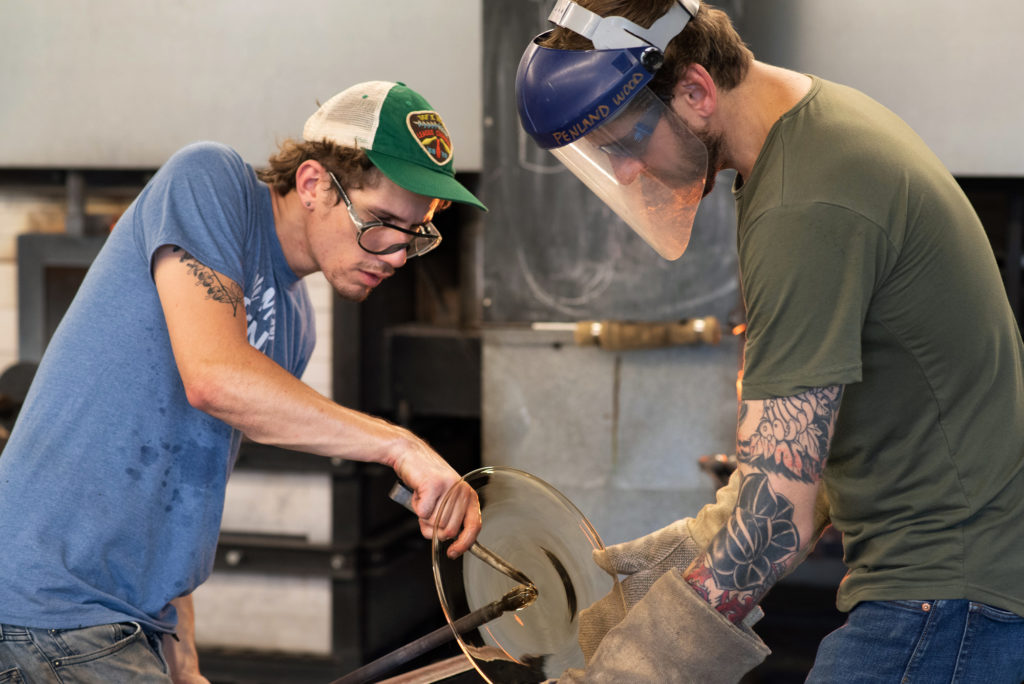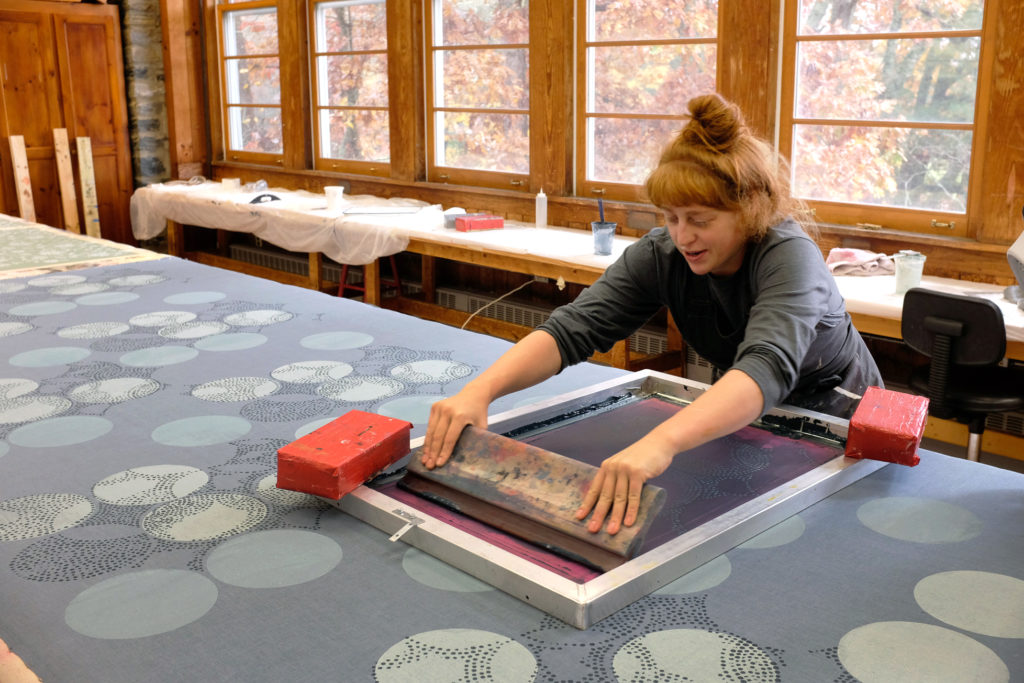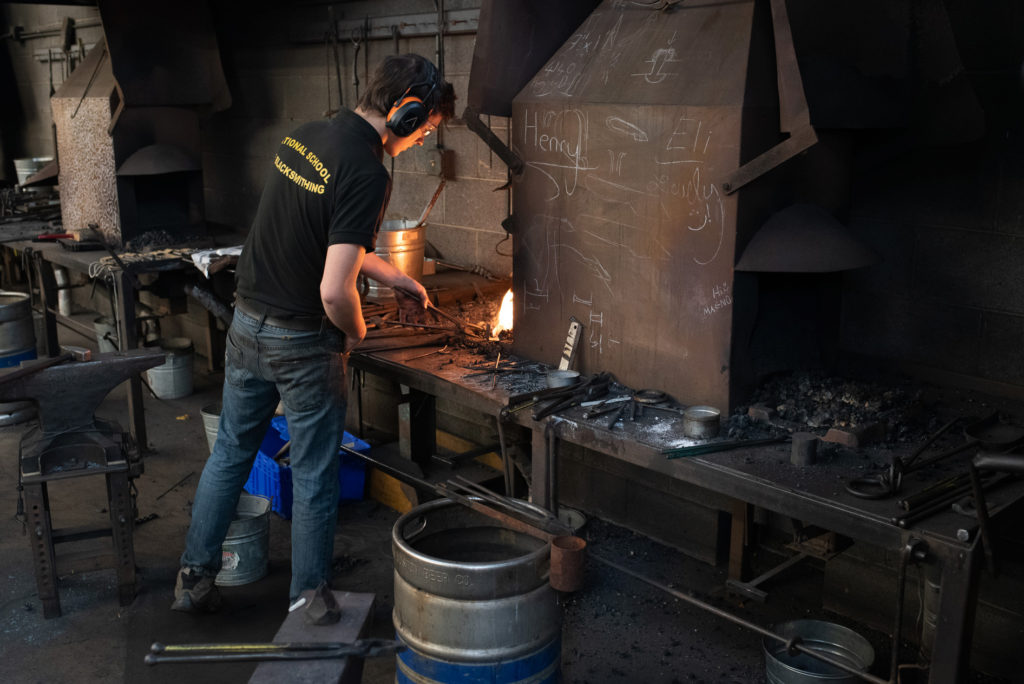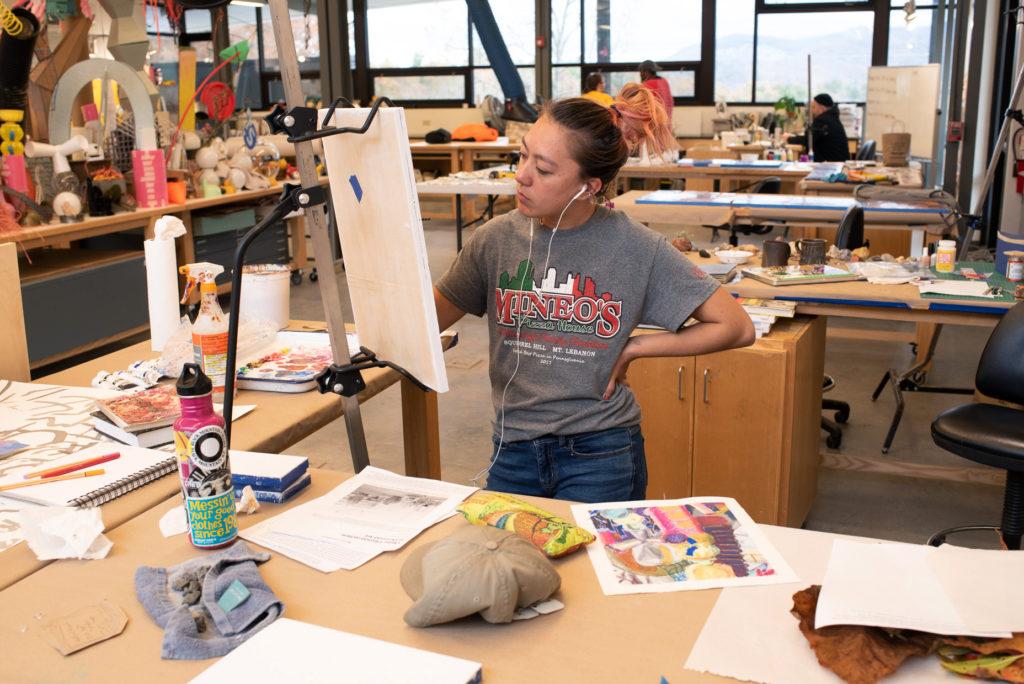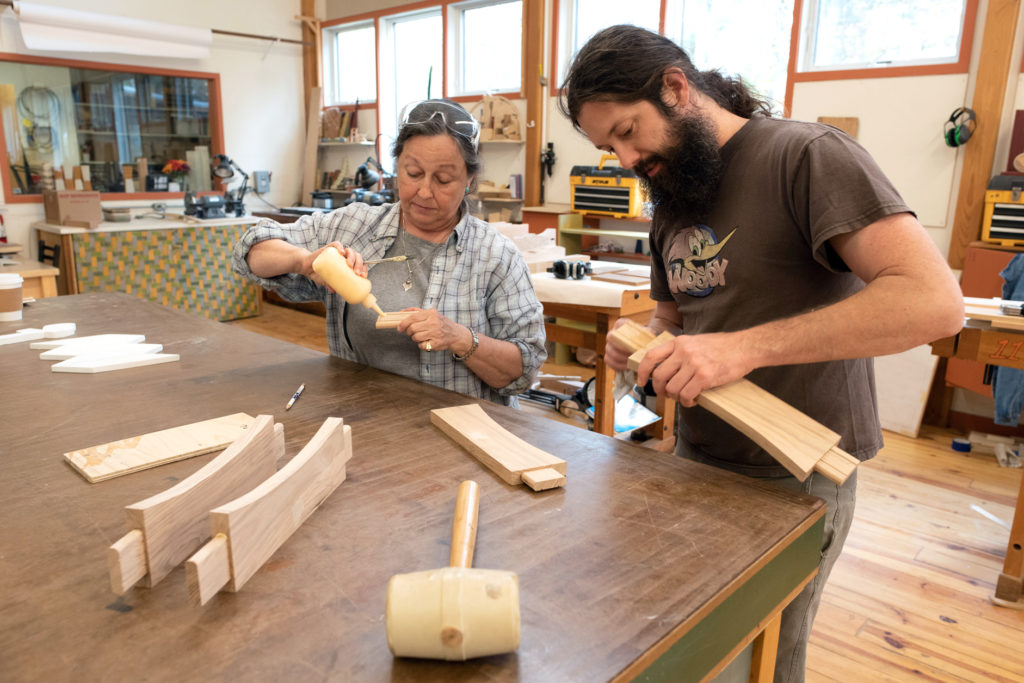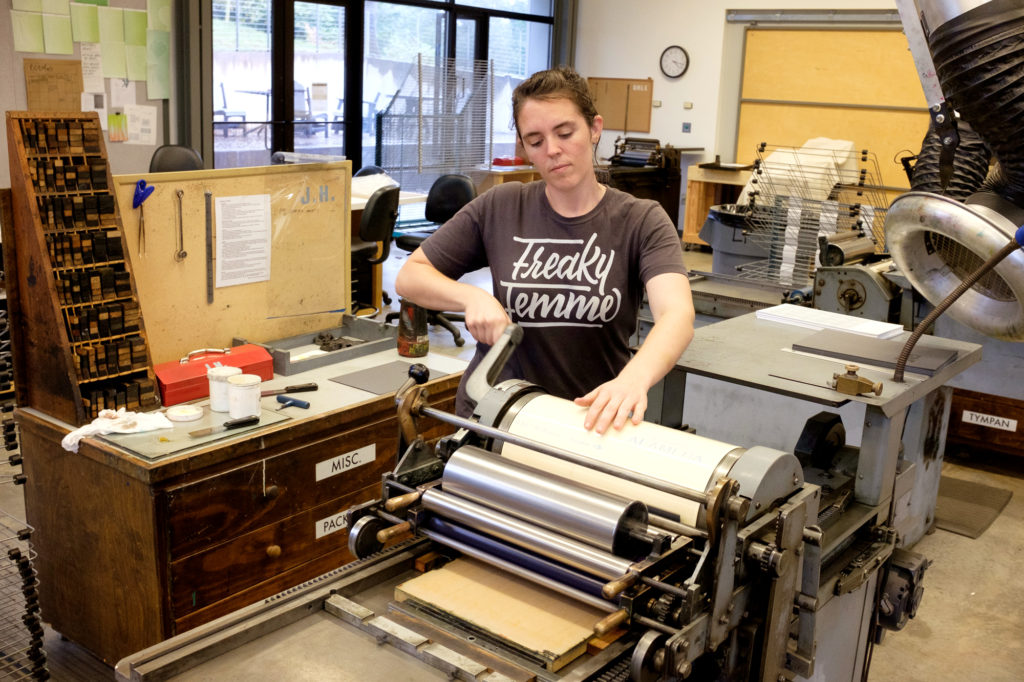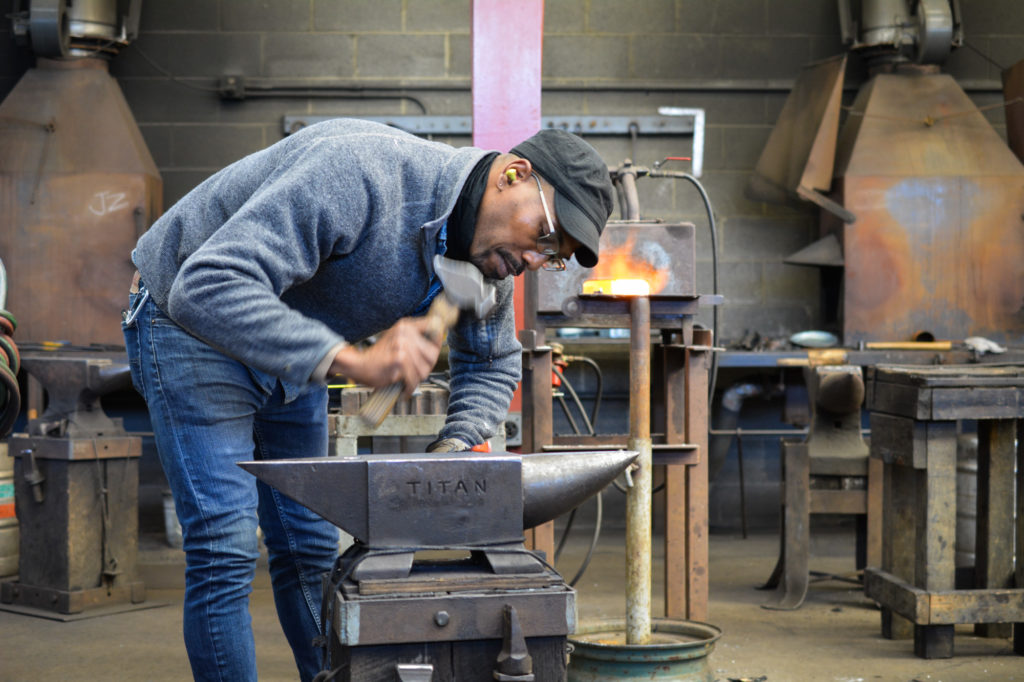
We eat every day, but how often do we dine? Dining makes an event of eating, transforming it into something more special than a sandwich at your desk or a granola bar on the go. It’s sitting down with intention, taking the time to savor food and company. It’s transferring your leftovers from their cardboard carton to a ceramic plate, clearing the mail off the table, folding a napkin. It’s combining elements to encourage a certain atmosphere and behavior.
Dining, then, is akin to much of the craft that happens at Penland: a celebration of focus, potential, and process.
Why not combine the two, dining and craft? This spring, metalsmith David Clemons and his students will do just that in the Penland iron studio March 10 – May 3. During the eight-week concentration Personal Dining Ware, David will introduce students to a wide range of forging and fabrication techniques to bring ideas for the table to life. From spoons and spatulas hammered at the anvil to drinking vessels and candleholders, they’ll use dining implements as a starting point to create thoughtfully designed and artfully crafted objects in metal.
David got a head start this winter during the two weeks he spent as a resident in the iron studio playing around with steel serving vessels and more. Below are a few photos of one piece he made, which started as a sketch and then took form as forged elements that he welded together into the most exquisite sectioned tray.
Students in David’s class will take a similar approach, using a specific food or presentation or style as inspiration to create objects both functional and beautiful. Along the way, they can expect to give their metalworking skills a major boost.
REGISTER NOW
Work-study scholarships still available!

Personal Dining Ware
David Clemons, March 10 – May 3, 2019
Indulgence, sustenance, diplomacy, celebration, and even revenge are a few of the many motivations for the act of dining as reflected in our lives and in pop culture. In this workshop, we’ll engage in the design, fabrication, and forging of objects that facilitate and provide ambiance for dining. We’ll cover forging, cutting, welding, forming, pressing, etching, patination, tinning, cold connections, and other techniques. Formats will include flatware, serving vessels, and candle holders. Some metalworking experience will be helpful, but this workshop is open to all levels. Code S00I
Studio artist; former head of metals at University of Arkansas at Little Rock; other teaching: Memphis College of Art, Oregon College of Art and Craft, Maine College of Art; Arkansas Arts Council Individual Artist Fellowship; collections: National Ornamental Metal Museum (Memphis), Yale University (CT), Arkansas Art Center.


